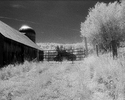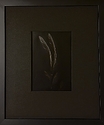mshchem
Subscriber
I love Selenium toner . The only reason to use hardener is if you scratch prints, or dry fiber base prints on a belt dryer. Last night I printed a bunch of 5x7s on Ilford RC. I used the Ilford method , at 70 F, 2 minutes in Bromophen, a brief dip in Ilford citric acid stop, 30 seconds in Hypam fixer (1&4). I rinsed the prints briefly, when I was done I toned all of them at once with KRST, 70F for 5 minutes. Final wash and dried with my Ilford dryer. No problems.
If it ain't broke don't fix it (or in this case harden it)
I use Kodak Rapid Fix with hardener for fiber base prints, especially when I tone the prints. I know everyone says it's a bad idea . Back in the day everything was hardened and toned. I use hypo clear and wash in 70F water. According to Kenneth Mees hardener didn't effect diffusion rate of chemicals in and out of the gelatin, this is 1930's era work.
The older I get the more I like RC Ilford method.
If it ain't broke don't fix it (or in this case harden it)
I use Kodak Rapid Fix with hardener for fiber base prints, especially when I tone the prints. I know everyone says it's a bad idea . Back in the day everything was hardened and toned. I use hypo clear and wash in 70F water. According to Kenneth Mees hardener didn't effect diffusion rate of chemicals in and out of the gelatin, this is 1930's era work.
The older I get the more I like RC Ilford method.








